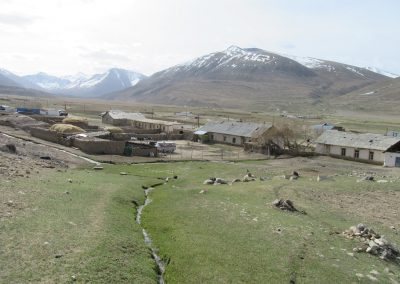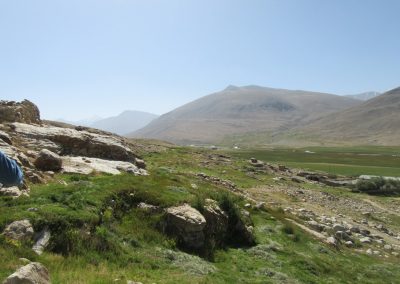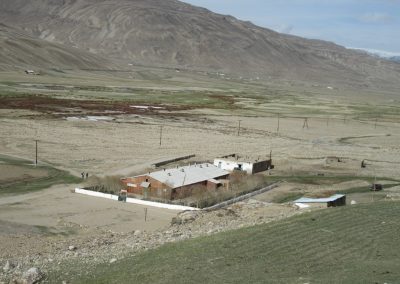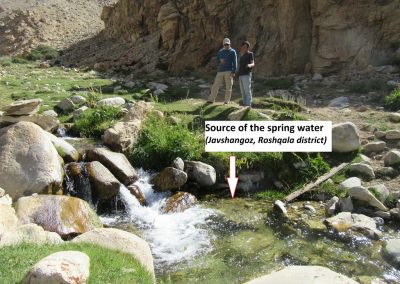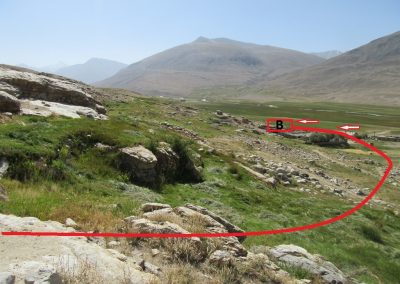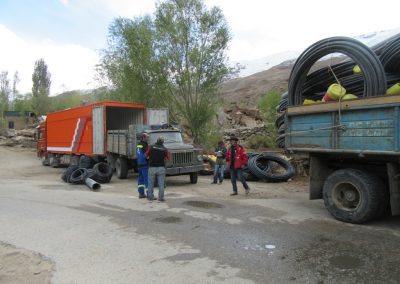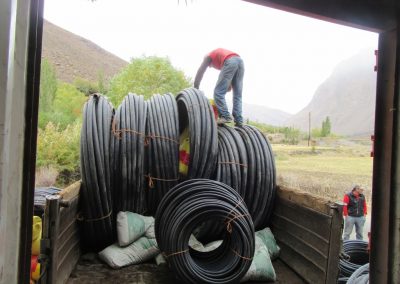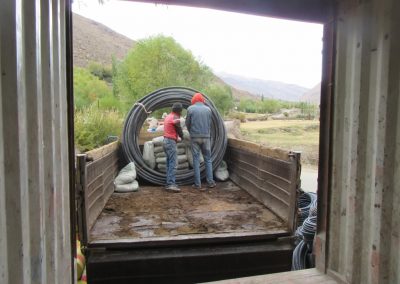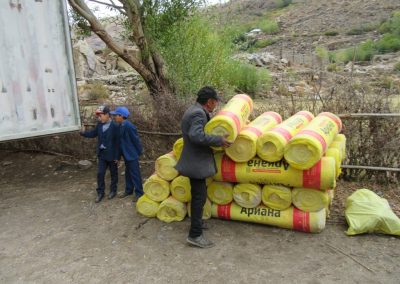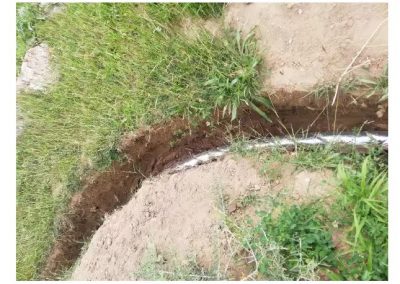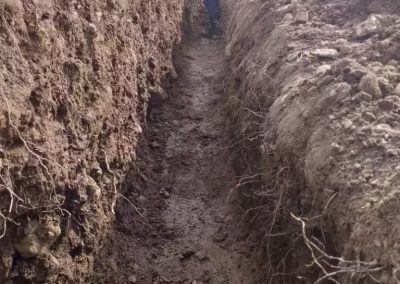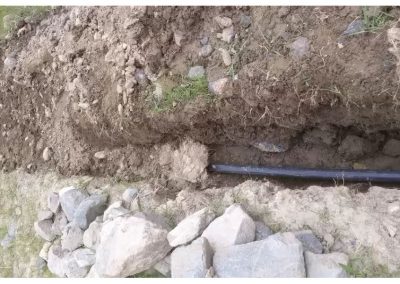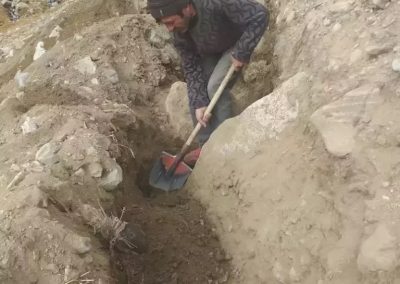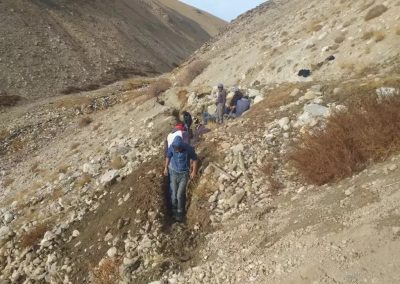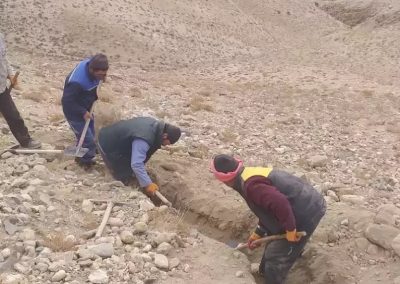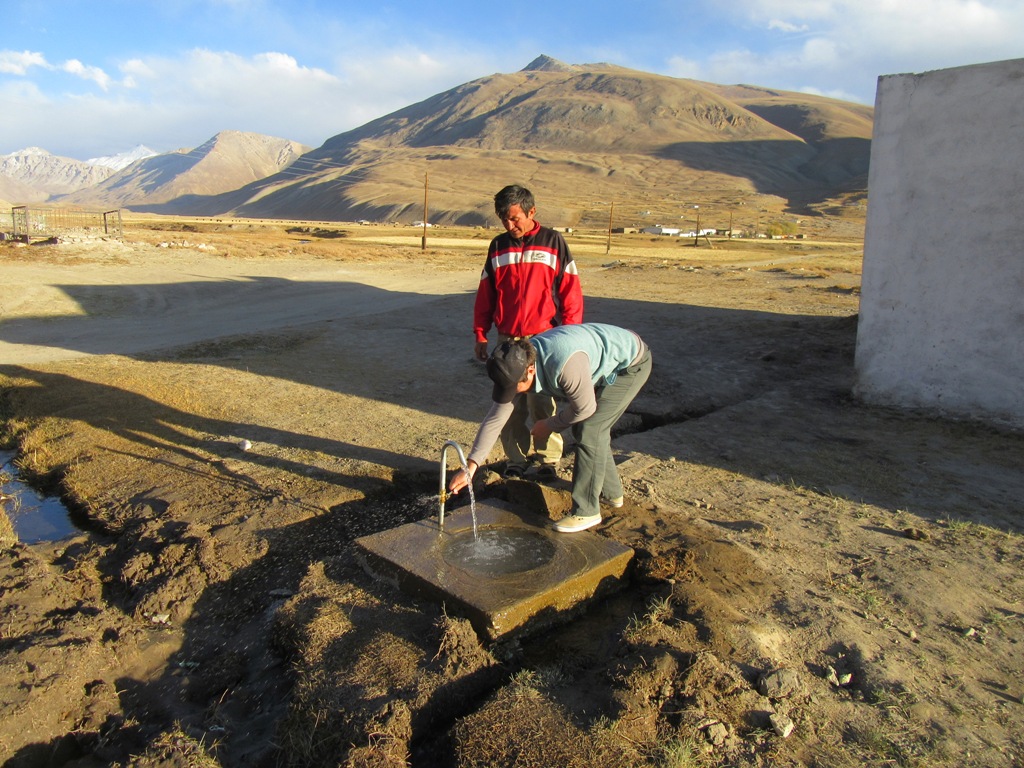Project 30, Donation cost US$4,100: UBB Installed a pipeline to provide Javshangoz, 24 families, Roshtkala Valley, access to clean safe drinking water from a spring, 2.8 km away, up a mountain.
Funding
Mithoo and Nabat Gillani (residing in Cagary, Canada) covered US$2,000 of the total cost.)
Javshangoz Village
Pre-project Situation
In the non-winter months, the village gets its drinkable water from a channel which is fed by the melting snow from up in the valley, located 2 km above the village.
But in the cold season, the water in the channel freezes up. Then the villagers have to go to Shogdara river to collect water in bottles and then carry the water-filled bottles back to the village on foot and or using donkeys. This task uses up more than half of the day.
This above described problem also affects the school and the hospital in the area.
After the water is brought in and before they can drink it, they have to leave the water in the Sun for 2-3 hours for all the silt to settle down to the bottom of the containers. Even then, the water is not safe enough.
Project Scope
To install a polythene pipeline from the spring source, 2400 meters away, to the village
Expected Benefits
This piped access to potable water will benefit them in 4 different ways:
1) The villagers will not suffer from water borne deseases 2) It will free up more time to work on their farm land during spring, summer and fall and 3) in winter, it will give the parents more time to spend with the kids on doing their home wwork,and 4) every day, they will have more time to cook meals
Items donated
50 mm diameter polyethylene pipes for the pipeline; glass wool insulation for the pipes, cement and any outsourced service needed to trench in rocky areas.
Installation by the village
Completed project
Feedback from the village
Date of the Feedback: 6/10/2020
Feedback received from: Chief of the Javshangoz village Dodikhudoev A (mobile ph: 938664748), GBAO, Tajikistan after, the completion of the project below:
Project: Donated assistance in providing a pipeline access to safe clean drinking water
How has this pipeline helped you in saving time for other activities?
In winter: Before at least 2-3 hours on bringing water to the house, and during the winter it was much harder, as the temperature could get down to – 30 C. Now the women that were mainly bringing water will use that time for cooking and other tasks around the house.
In spring: In mid spring the work on the lands and with the livestock starts and the adults are busy with that, mainly the children bring water to the house. Now they will have more time for their studies and doing other chores around the house.
In summer: Summer is very busy period for the villagers, too. People will have more time to spend on their farm land and/or livestock.
In Fall: Fall is harvesting period, people will have more time to do the harvesting of the livestock fodder in time. In addition women will have some additional time for cooking more nutritious food for their children.
How does the water from the pipeline taste? – The water from the pipeline tastes much better than the one we used to bring from the river. It is much cleaner, as it comes right from the spring. Spring water tastes very good.
Does the taste change in different seasons – it tastes the same all the seasons
Does it have any color – No
Does it have any odor – No
Do use any water from this for washing? – Yes
(if YES) does the water leave any stains on the clothes? – No
Is the water hard (hard water = soap and water do not create many foams (like when you are washing hands or showering) – No, it is very soft
Any water can contain bacteria, nitrates, total dissolved salts and alkaline level, etc. So testing it regularly to see how safe it is to drink is important.
When water tastes bad, smells bad or has a color, it indicates that water needs to be tested by a specialist from a nearby government.
Can you plan to get water tested, once a year by a government specialist? -Yes
Additionally, When we give you a TDS meter, can you plan for your own health to test the tap water regularly with this device during each month? – Yes, of course
This device is to test for other dissolved salts. And from the readings you get, you can judge how safe is the water.
To judge the results, use the table below:
According to World Health Organization:
TDS level less than 300 mg/litre is considered as excellent,
between 300 and 600 mg/liter is good,
between 600-900 is fair,
between 900 – 1200 is poor and
more than 1200 mg/liter is unacceptable
Duaa from the Village Chief:
The people of Javshangoz village are very grateful for Shiraz and Shahida Dhanani and Mithoo and Nabat Gillani, for their charity work they are doing. We make dua from the bottom of our hearts for their health and prosperity. We also make dua for the family members who are not in this world anymore Sherbanu, Hasham, Naseem, Aly and Rahemat, may they souls rest in heaven.
